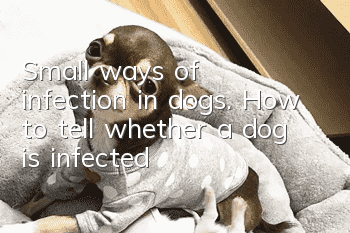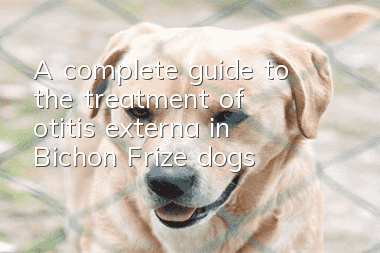Small ways of infection in dogs. How to tell whether a dog is infected?

Small ways of infection in dogs
Food, tableware, drinking water, and the environment contaminated by the excrement or secretions of dogs infected with the virus can transmit the virus. The feces of recovered dogs can contain poison for a long time. When unvaccinated dogs, especially dogs under 3 months old, develop gastrointestinal diseases, you must pay special attention and go to the hospital for examination as soon as possible. Because the symptoms of dogs suffering from canine parvovirus are very similar to acute gastroenteritis, they will have symptoms such as vomiting, diarrhea, and bloody stools.Symptoms of parvovirus infection in dogs
(1) Myocarditis syndrome is the main disease in sick puppies between 3 and 6 weeks old. She is in good spirits, with only mild diarrhea and vomiting in some cases. The specific manifestations include difficulty in breathing, hyperpalpitations, pale mucous membranes, and physical failure in puppies. Dogs with myocarditis type disease have an acute course, worsen rapidly, and often die before treatment;(2) Adult dogs mostly suffer from enteritis syndrome. The incubation period of enteritis-type syndrome is 7 to 14 days. The dog is depressed at this time, has no appetite, usually vomits first and then has diarrhea. The feces contains a lot of mucus and is yellow or gray-yellow. 2 to 3 days after the illness, the feces has a special fishy smell, like tomato juice, mixed with blood. Symptoms of dehydration soon appeared, the body temperature rose to above 40°C, and thirst increased. In the later stages, the body temperature of some dogs is lower than normal, and the visible mucous membranes are pale. The tail and rear abdomen are often contaminated with feces, and in severe cases, the anus is loose. However, if dogs with enteritis type can receive timely and reasonable treatment, their mortality rate can be significantly reduced.
How to care for dogs infected with parvovirus
(1) Puppies infected with parvovirus will suffer from shock and hypotension due to excessive vomiting, diarrhea, excessive physical energy and water consumption, and obvious peripheral circulation disorders. Body temperature symptoms. Lowering the body temperature too quickly will accelerate the death of the dog, so keeping warm is especially important.(2) Dogs infected with the virus need to eat and drink to allow their intestines to rest to reduce the burden. Replenishing fluids multiple times a day can basically meet the puppy's life needs. Excessive drinking will only stimulate the dog to vomit repeatedly, and the more it drinks, the more it will vomit and aggravate the condition. Fasting is required during the illness, and after the condition improves, the dog should slowly and actively eat some easily digestible food. At this time, since the intestinal damage has not fully recovered, it is best to give some intestinal prescription foods to reduce the burden on the gastrointestinal tract, but the process of changing the food should be gradual, and do not change it all at once; you can also supplement some intestinal probiotics, and Soak the dog food until soft before giving it to the dog.
Key Tips:
The 3rd to 5th day of treatment is the most difficult stage. At this stage, the dog's condition is serious and very painful. Many owners cannot bear the suffering of their dogs and easily lose confidence prematurely and give up on treatment. In fact, as long as this stage is passed, dogs infected with parvovirus rarely die. Sometimes hope is just one step away, so don’t lose confidence.
Want to see more:
How to prevent canine parvovirus, vaccination on time is the key!
Random articles
- Why does the dog's water intake suddenly increase? Reason for sudden increase
- Why is the dog depressed?
- How many times can a dog be mated in a day?
- How long does it take for a dog to develop feelings for people?
- Do puppies that are two months old need to take probiotics?
- Can a dog be trained to be a police dog? How to train a dog to be a police dog?
- How does a novice train a Shiba Inu? Training Shiba Inu should start from these places
- How to treat arthritis symptoms in dogs
- What foods can kill dogs if they eat them?
- Things to note when your dog starts menstruation for the first time



